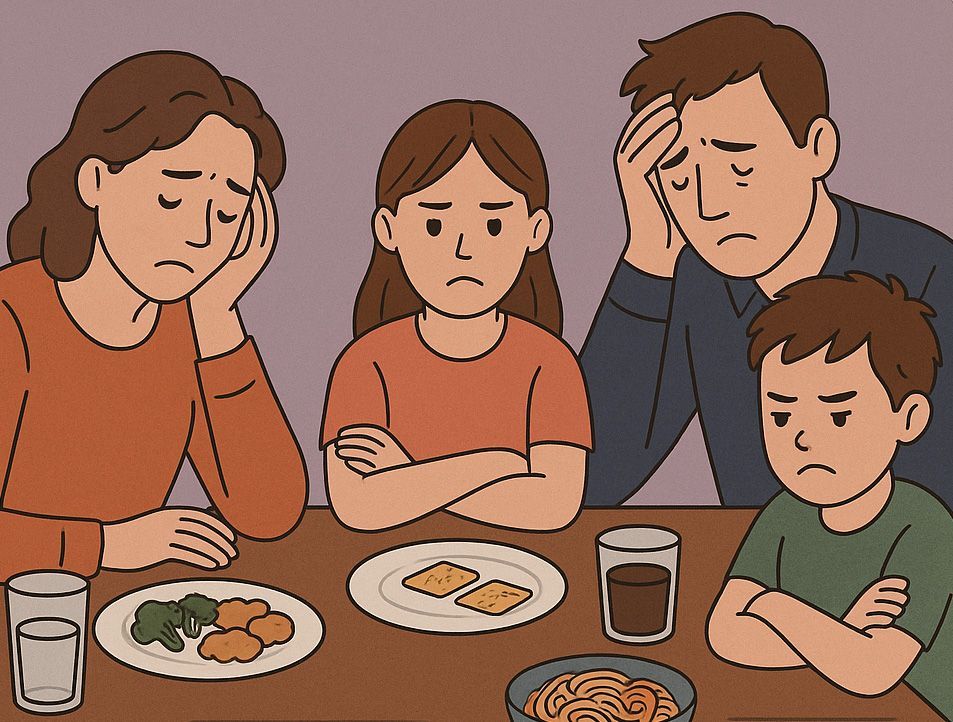Engaging in Healthy Aging: Five Ways to Reinforce Lifelong Wellness

By Thrive Sacramento Registered Dietitian Moriah Martin, RDN
Caring for mental and physical health during one’s early years can promote mind-body wellness that endures as a person ages. When consistently implemented throughout one’s life, habits and behaviors such as practicing mindfulness, having good sleep hygiene, eating according to one’s nourishment needs, engaging in joyful movement, and seeking clinical or therapeutic support as needed can have lasting impacts on well-being.
FIVE WAYS TO ENCOURAGE HEALTHY AGING
Because physical and mental health are closely connected, caring for the body promotes the health of the mind and vice versa. Ways to enhance mind-body wellness throughout one’s lifespan include:
- Integrating mindfulness practices : Mindfulness practices such as meditation and methodical breathing can be helpful ways to arrive in the present moment, gain clarity over one’s situation, and face obstacles with full awareness. Often, we as humans attempt to distract ourselves from distressing circumstances. Mindfulness, however, can encourage us to experience and process our thoughts and emotions as well as tune into our bodies, which can guide us to respond rather than react to different situations. By maintaining a consistent mindfulness practice throughout one’s life, a person can mitigate the anxiety and depression that can arise from not residing in the present moment.
- Practicing good sleep hygiene : While sleeping, the body removes toxic waste, repairs damaged cells, and releases health-promoting hormones. Regularly obtaining adequate, quality sleep can help protect against cognitive decline and other health ailments.
- Prioritizing personalized nourishment: How one nourishes their body can immensely influence one’s emotional state. For instance, gut bacteria , which are found in the large intestine, create 95% of the body’s serotonin. By eating adequately, consistently, and including a wide variety of foods in one’s diet, a person can promote optimal lifelong functioning of their body and brain. Additionally, when eating mindfully and intuitively , a person can enjoy eating experiences while personalizing their nutrition without the stress of restrictive food rules.
- Engaging in joyful movement . Physical activity can help keep the mind and body healthy as one ages. Sometimes, however, finding one’s favorite ways to move may require some trial and error. By listening to one’s body, adjusting the movement as necessary, and ignoring any harmful internal or external expectations, a person can find exhilaration, empowerment, and enjoyment as they explore the many ways to move.
- Attending therapy: A therapist can provide professional, unbiased guidance to help one develop healthy perspectives for circumstances ranging from trying to joyful. Therapy also can also help individuals build resilience which can promote mental well-being throughout life.
NURTURING MIND-BODY HEALTH AT THRIVE WELLNESS
With interdisciplinary clinicians dedicated to identifying and tending to any upsets to the mind-body balance and providing tools to encourage holistic health, Thrive Wellness is committed to comprehensive care that promotes life-long wellness for the entire person. Reach out to learn more about our mental, behavioral, and physical health care services.
While all Thrive Wellness locations offer interdisciplinary clinical teams who collaborate to treat eating disorders, perinatal mood and anxiety disorders (PMADs), and additional mental and behavioral health conditions, programs and services may vary by location.
About the Author
By Thrive Sacramento Registered Dietitian Moriah Martin, RD
Moriah Martin boasts bachelor’s degrees in nutrition education from San Jose State University and dietetics from the University of Alabama and recently became a registered dietitian nutritionist (RDN) in California. With several years of experience in corporate wellness and nutrition counseling combined, her passion for promoting well-being is undeniable. As an RDN at Thrive Sacramento, Moriah guides and encourages clients through eating disorder treatment. She takes great pride in walking alongside clients on their path to recovering their relationships with food and their bodies.
In addition to her professional endeavors, Moriah has donated her time and talents to a local LGBTQ center where she provides nutrition counseling and performs cooking demonstrations to community members.
The post Engaging in Healthy Aging: Five Ways to Reinforce Lifelong Wellness first appeared on Thrive Wellness.








